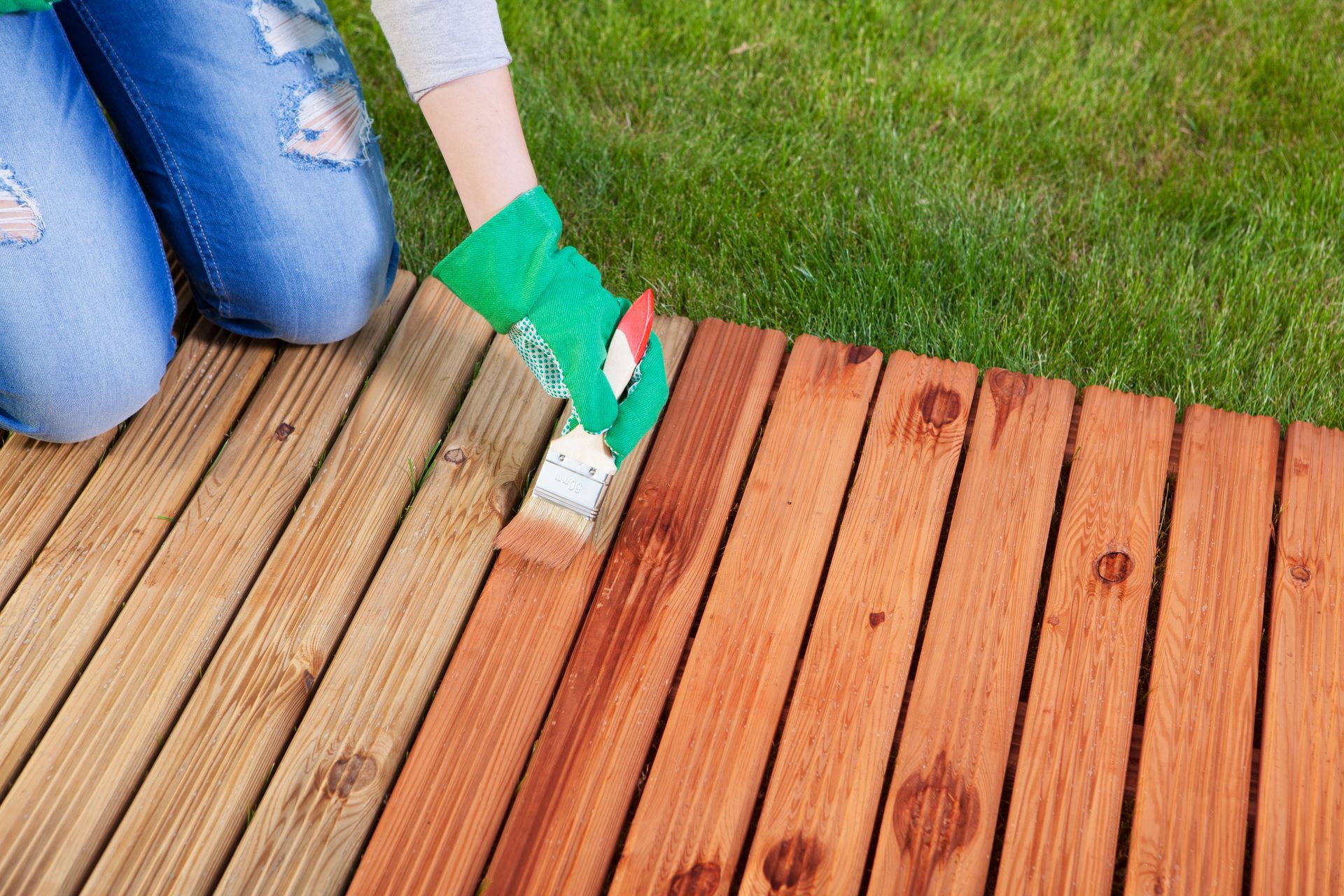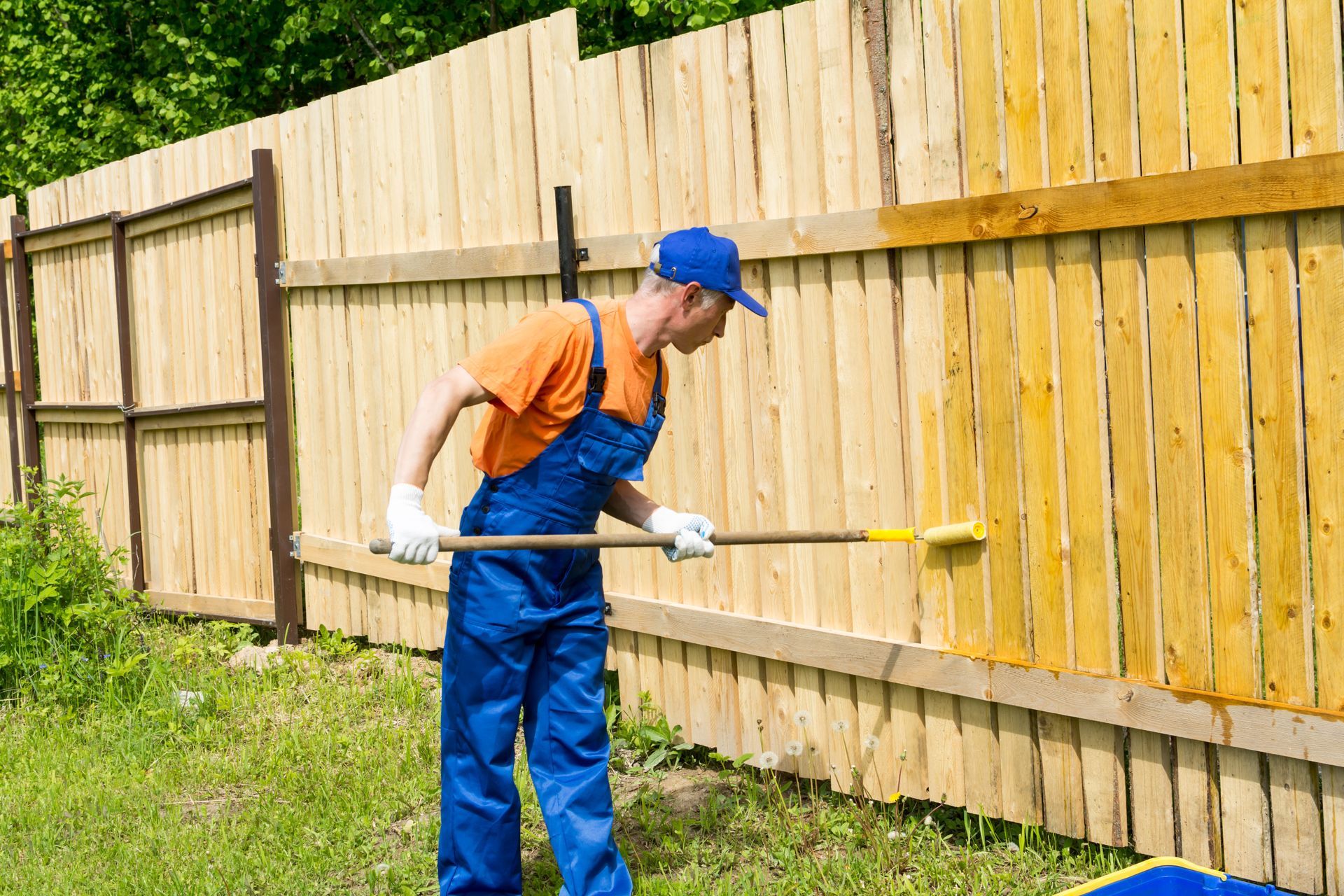Staining
Different Types of Deck Stains and Sealers
Deck stains and sealers are essential for protecting outdoor wood surfaces from weathering, UV damage, moisture, and general wear and tear. There are several types of deck stains and sealers available, each offering different levels of protection and aesthetic finishes. Here are some of the different types:
- Clear Sealers: Clear sealers are transparent coatings that provide basic protection against moisture and UV damage while allowing the natural grain and color of the wood to show through. They are ideal for preserving the natural look of the wood without altering its appearance significantly. However, they may require more frequent reapplication compared to other types of stains.
- Toner Stains: Toner stains add a hint of color to the wood while still allowing the grain to show through. They provide minimal UV protection and are best suited for newer wood decks or those with minimal sun exposure. Toners can help even out the wood's appearance and provide a subtle enhancement to its natural color.
- Semi-Transparent Stains: Semi-transparent stains offer more color options than toners while still allowing some of the wood's natural grain and texture to be visible. They provide moderate UV protection and help to highlight the wood's natural beauty while adding a subtle tint. Semi-transparent stains are suitable for moderately weathered decks and can help rejuvenate the wood's appearance.
- Solid Stains: Solid stains, also known as opaque stains, provide the most significant color coverage and UV protection. They completely conceal the wood grain while offering a wide range of color options. Solid stains are ideal for older decks with extensive wear and weathering or for those who prefer a consistent, painted look. They offer excellent durability and require less frequent maintenance compared to transparent or semi-transparent stains.
- Deck Paints: Deck paints provide the highest level of protection and color coverage. They create a fully opaque finish similar to solid stains but with even more robust durability. Deck paints are available in a variety of colors and can completely transform the look of a deck. However, they typically require more preparation and maintenance than stains, as they can be prone to chipping and peeling over time.
Get a free quote
Contact Us
6. Water-Based vs. Oil-Based: Stains and sealers are available in both water-based and oil-based formulations. Water-based products dry faster, have less odor, and are easier to clean up, but may not penetrate the wood's surface as deeply. Oil-based products offer better penetration and durability but take longer to dry and may have a stronger odor during application.
When choosing a deck stain or sealer, consider factors such as the level of UV protection needed, desired color and finish, wood type, and environmental conditions. It's also essential to properly prepare the wood surface and follow the manufacturer's application instructions for best results and long-lasting protection.
The Long-Term Benefits of Deck Maintenance
1. Protection Against Elements:
Staining forms a protective barrier against the elements, shielding the wood from moisture, UV rays, and temperature fluctuations. Over time, exposure to these elements can lead to deterioration, warping, and discoloration. Stain penetrates deep into the wood, creating a durable shield that prolongs its lifespan and maintains its original allure.
2. Preventing Decay and Rot:
Moisture is the primary adversary of wooden decks, inviting decay and rot that compromise structural integrity. Staining seals the wood, inhibiting moisture penetration and thwarting the growth of mold, mildew, and fungi. By preventing decay, staining preserves the solidity of the deck, ensuring it remains a safe and reliable outdoor sanctuary for years to come.
3. Enhancing Aesthetics:
Beyond protection, staining rejuvenates the appearance of the deck, enhancing its natural beauty and enriching its color. Whether you prefer a transparent stain that accentuates the wood's grain or a solid color stain that offers uniform coverage, the right stain can transform a weathered deck into a stunning focal point of your outdoor landscape. Regular staining preserves this aesthetic appeal, maintaining the deck's allure season after season.
4. Increasing Property Value:
A well-maintained deck is not just a personal oasis; it's a valuable asset that enhances the overall appeal and marketability of your property. Potential buyers are drawn to homes with meticulously cared-for outdoor spaces, and a properly stained deck speaks volumes about the homeowner's commitment to maintenance and quality. Investing in deck staining is, therefore, an investment in your property's long-term value, yielding returns in terms of curb appeal and resale value.
5. Cost-Effectiveness:
While some homeowners may perceive deck maintenance as a recurring expense, it's essential to recognize the cost-effectiveness of preventive measures such as staining. The relatively modest investment in staining pales in comparison to the potential costs of repairing or replacing a neglected deck suffering from extensive damage. By proactively preserving the deck through staining, homeowners not only save money in the long run but also spare themselves the inconvenience and disruption of major renovations.
Having an Emergency?
We're available 24-hours a day, 7 days a week.
Understanding the Deck Staining Process
When it comes to revitalizing your outdoor space, few things can match the transformative power of a fresh deck stain. At Deck & Fence Force, we understand the intricacies of the deck staining process and are here to guide you through it.
- Preparation is Key: Before diving into staining, proper preparation is essential. This involves cleaning the deck thoroughly to remove dirt, debris, and any old finish. This step ensures better stain penetration and a longer-lasting finish.
- Choosing the Right Stain: With a myriad of options available, selecting the right stain can be overwhelming. Whether you opt for a transparent, semi-transparent, or solid color stain depends on your preferences and the level of protection you seek. Our experts can help you navigate these choices based on your needs and the deck's condition.
- Application Techniques: The application method significantly impacts the outcome. Whether you're brushing, rolling, or spraying the stain, each technique requires careful consideration to achieve an even finish and avoid drips or lap marks.
- Timing Matters: Staining your deck is not a task to rush through. Ideal weather conditions, such as mild temperatures and low humidity, are crucial for optimal stain absorption and drying. Planning your staining project during a time of stable weather ensures the best results.
- Maintenance for Longevity: Proper maintenance is vital for preserving the beauty and integrity of your newly stained deck. Regular inspections, cleaning, and occasional touch-ups will extend the life of the stain and protect your deck from the elements.
At Deck & Fence Force, we take pride in our expertise in deck staining and restoration. Let us help you enhance the beauty and longevity of your outdoor living space. Contact us today to schedule a consultation and take the first step towards a stunning deck transformation.
Staining Questions and Answers
Frequently Asked Questions

